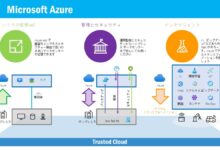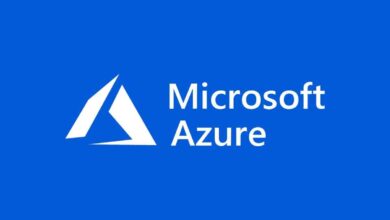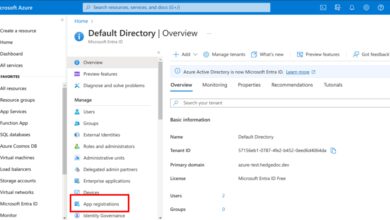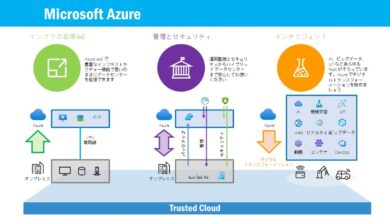And azure: 7 Powerful Ways AWS and Azure Transform Cloud Computing
In today’s fast-evolving digital landscape, cloud computing has become the backbone of innovation, scalability, and efficiency. Among the leaders shaping this revolution are AWS and Azure—two titans driving enterprise transformation worldwide.
AWS and Azure: Dominating the Global Cloud Market
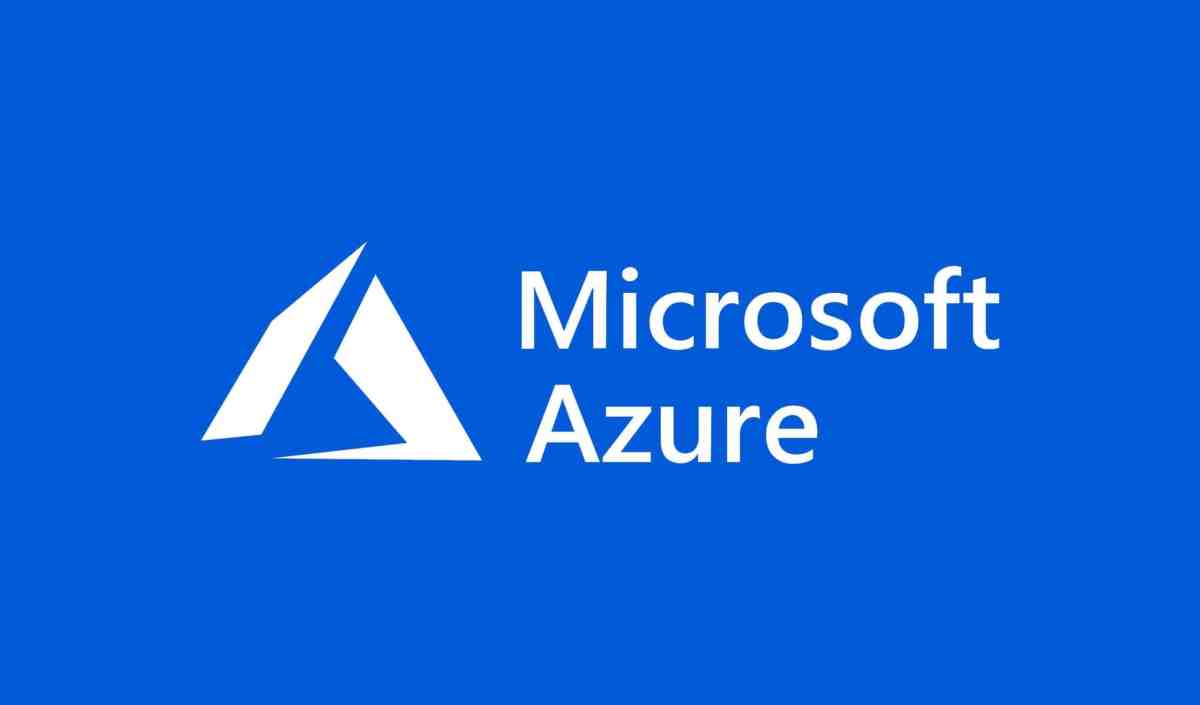
The cloud computing industry has witnessed exponential growth over the past decade, with Amazon Web Services (AWS) and Microsoft Azure emerging as the two most influential players. Together, they control over 60% of the global cloud infrastructure market, according to recent data from Synergy Research Group. Their dominance is not accidental but rooted in continuous innovation, vast service portfolios, and deep integration with enterprise ecosystems.
Market Share and Global Reach
AWS has consistently held the top position since its launch in 2006, offering over 200 fully featured services from data centers in 33 geographic regions. Azure, launched in 2010, has rapidly closed the gap by leveraging Microsoft’s existing enterprise relationships and hybrid cloud capabilities. As of 2024, AWS holds approximately 32% of the market, while Azure follows closely with around 24%, leaving others like Google Cloud far behind.
- AWS operates in 33 regions with 102 Availability Zones.
- Azure spans 60+ regions, the most of any cloud provider.
- Both support government-specific clouds (e.g., AWS GovCloud, Azure Government).
Their global footprint enables organizations to deploy applications closer to end-users, reducing latency and complying with regional data sovereignty laws. This geographic advantage is a key reason why enterprises choose AWS and Azure for international expansion.
Core Strengths That Define Leadership
AWS’s strength lies in its maturity, breadth of services, and pioneering role in defining cloud-native architectures. It was the first to introduce Infrastructure-as-a-Service (IaaS) at scale and continues to lead in areas like serverless computing with AWS Lambda and container orchestration via Amazon EKS.
On the other hand, Azure excels in hybrid integration, particularly for businesses already invested in Microsoft technologies such as Active Directory, Office 365, and .NET frameworks. Azure Arc, for example, allows management of on-premises, multi-cloud, and edge environments from a single control plane—something AWS is still catching up on.
“The competition between AWS and Azure isn’t just about technology—it’s about ecosystem lock-in, enterprise trust, and long-term strategic alignment.” — Gartner Analyst, 2023
Comparing Key Services: AWS and Azure Side by Side
To understand how AWS and Azure stack up, it’s essential to compare their core offerings across compute, storage, networking, and AI/ML. While both platforms provide comprehensive toolsets, their approaches often reflect different philosophies and target audiences.
Compute Capabilities: EC2 vs. Virtual Machines
Amazon EC2 (Elastic Compute Cloud) remains the gold standard for virtualized computing in the cloud. With over 500 instance types optimized for various workloads—from general-purpose to GPU-accelerated computing—EC2 offers unmatched flexibility. Features like Spot Instances allow cost savings of up to 90% for interruptible workloads, making it ideal for batch processing and dev/test environments.
Azure Virtual Machines offer similar functionality but integrate more seamlessly with Windows-based applications and legacy systems. Azure also provides specialized VMs for high-performance computing (HPC), SAP workloads, and confidential computing using Intel SGX or AMD SEV technologies.
- AWS EC2 supports Graviton2 and Graviton3 ARM-based processors for better price-performance.
- Azure offers HBv3 and HCv3 series for supercomputing and AI training.
- Both support autoscaling, load balancing, and custom images.
For organizations running Linux-heavy or microservices-based architectures, AWS often provides more granular control. However, enterprises with heavy Microsoft licensing may find Azure VMs more cost-effective due to hybrid benefit discounts.
Storage Solutions: S3 vs. Blob Storage
Amazon S3 (Simple Storage Service) is arguably the most widely adopted object storage solution globally. Launched in 2006, S3 set the benchmark for durability (99.999999999%), availability, and scalability. It supports multiple storage tiers—from standard to infrequent access (IA) and Glacier for archival—with lifecycle policies for automated cost optimization.
Azure Blob Storage mirrors many of these capabilities but integrates tightly with Azure Data Lake and Synapse Analytics, making it a preferred choice for data lake implementations. Azure also offers hierarchical namespace support natively in Blob Storage, enabling Hadoop-compatible file systems without additional layers.
While S3 has broader third-party tool support and is deeply embedded in DevOps pipelines, Azure Blob Storage shines in analytics-heavy environments where seamless integration with Microsoft’s data stack is crucial.
“S3 is the de facto standard for cloud storage, but Azure Blob is closing the gap in enterprise data governance and compliance.” — TechTarget, 2023
Networking and Global Connectivity: VPC vs. Virtual Network
Robust networking is critical for secure, high-performance cloud deployments. Both AWS and Azure provide advanced networking features, but their implementations differ in complexity and integration.
Virtual Private Cloud (VPC) and Virtual Network (VNet)
AWS Virtual Private Cloud (VPC) allows users to define isolated sections of the AWS cloud with complete control over IP ranges, subnets, route tables, and network gateways. VPC peering, Transit Gateway, and Direct Connect enable complex multi-account and hybrid network architectures.
Azure Virtual Network (VNet) offers comparable isolation and segmentation. However, Azure’s global VNet peering and built-in DNS resolution across VNets simplify cross-region communication. Azure also integrates network security groups (NSGs) and application security groups (ASGs) more intuitively than AWS’s security group model.
- AWS VPC supports IPv6 and custom route propagation via Transit Gateway.
- Azure VNet includes service endpoints and private links for secure PaaS access.
- Both support site-to-site and point-to-site VPNs and ExpressRoute/Direct Connect equivalents.
For large-scale enterprises with complex network topologies, AWS VPC offers more granular control, while Azure VNet provides smoother integration with on-premises Active Directory and hybrid identity solutions.
Content Delivery and Edge Services
AWS CloudFront is a highly performant content delivery network (CDN) that integrates with S3, EC2, and Lambda@Edge for dynamic content acceleration. It supports real-time logs, field-level encryption, and DDoS protection via AWS Shield.
Azure Content Delivery Network (CDN) leverages Microsoft’s global network and offers Standard and Premium tiers (powered by Verizon and Akamai). The Premium tier includes advanced rules engine, token authentication, and URL signing—features that rival CloudFront’s capabilities.
Both platforms support edge computing through serverless functions: AWS Lambda@Edge and Azure Functions with Azure CDN. However, AWS currently leads in adoption due to earlier market entry and tighter integration with its ecosystem.
Security, Compliance, and Identity Management with AWS and Azure
Security is a shared responsibility in the cloud, and both AWS and Azure provide robust tools to help organizations protect data, manage identities, and meet compliance requirements.
Identity and Access Management (IAM)
AWS IAM is a mature, granular system that allows administrators to define policies using JSON-based rules. It supports multi-factor authentication (MFA), federated access via SAML 2.0, and temporary credentials through AWS STS (Security Token Service).
Azure Active Directory (Azure AD), now rebranded as Microsoft Entra ID, goes beyond traditional IAM by serving as a comprehensive identity platform for both cloud and on-premises resources. It supports Conditional Access policies, Identity Protection, and seamless single sign-on (SSO) across Microsoft 365, Salesforce, and thousands of SaaS apps.
- AWS IAM is deeply integrated with all AWS services and supports resource-based policies.
- Azure AD offers superior user lifecycle management and hybrid identity scenarios.
- Both support role-based access control (RBAC) and just-in-time (JIT) access.
For organizations already using Microsoft 365, Azure AD provides a frictionless path to cloud identity. In contrast, AWS IAM is preferred by DevOps teams managing infrastructure-as-code (IaC) workflows with tools like Terraform and AWS CloudFormation.
Compliance and Data Protection
Both AWS and Azure comply with major global standards including GDPR, HIPAA, ISO 27001, SOC 1/2/3, and FedRAMP. They offer compliance dashboards, audit trails via CloudTrail (AWS) and Azure Monitor, and encryption at rest and in transit by default.
AWS Config and Azure Policy allow continuous monitoring and enforcement of organizational rules. AWS GuardDuty provides threat detection using machine learning, while Azure Sentinel (now part of Microsoft Defender for Cloud) offers cloud-native SIEM and SOAR capabilities.
“When it comes to compliance, both AWS and Azure are equally capable—but the choice often depends on existing vendor relationships and internal expertise.” — Forrester Report, 2024
Microsoft’s deep ties with government and education sectors give Azure an edge in regulated industries, while AWS leads in financial services and tech startups due to its agility and innovation pace.
AI, Machine Learning, and Data Analytics: AWS and Azure Innovation Frontiers
Artificial intelligence and data analytics are where AWS and Azure showcase their cutting-edge capabilities, offering pre-built models, custom training environments, and end-to-end data pipelines.
Machine Learning Platforms: SageMaker vs. Azure ML
Amazon SageMaker is a fully managed service that enables developers and data scientists to build, train, and deploy ML models at scale. It includes built-in algorithms, automatic model tuning (hyperparameter optimization), and integration with Jupyter notebooks. SageMaker Studio provides a unified development environment for the entire ML lifecycle.
Azure Machine Learning offers similar capabilities with strong integration into Visual Studio Code, Azure DevOps, and MLOps practices. It supports automated ML (AutoML), responsible AI dashboards, and model interpretability tools out of the box.
- SageMaker supports custom containers and integrates with Kubeflow for hybrid ML workflows.
- Azure ML natively supports ONNX format and ONNX Runtime for cross-platform inference.
- Both offer managed inference endpoints and A/B testing for model deployment.
While SageMaker is favored for its flexibility and open-source alignment, Azure ML appeals to enterprises seeking tighter integration with existing Microsoft BI and data tools like Power BI and SQL Server.
Data Analytics and Big Data Processing
AWS offers a comprehensive suite: Amazon Redshift for data warehousing, EMR (Elastic MapReduce) for Hadoop/Spark workloads, Kinesis for real-time streaming, and Athena for serverless SQL queries on S3 data.
Azure counters with Synapse Analytics (unified analytics platform), HDInsight (managed Hadoop/Spark), Event Hubs (streaming), and Azure Databricks (jointly developed with Databricks Inc.). Synapse stands out by combining data integration, enterprise data warehousing, and big data analytics in a single service.
For organizations building modern data platforms, the choice between AWS and Azure often hinges on existing tooling. AWS is preferred for open-source-heavy, cloud-native data stacks, while Azure attracts those invested in Microsoft’s analytics ecosystem.
Hybrid and Multi-Cloud Strategies with AWS and Azure
As businesses move beyond public cloud-only models, hybrid and multi-cloud strategies have become essential. AWS and Azure offer distinct approaches to bridging on-premises infrastructure with the cloud.
AWS Outposts and VMware Cloud on AWS
AWS Outposts brings native AWS services, infrastructure, and APIs into on-premises data centers. This allows customers to run EC2, EBS, S3, and other services locally while maintaining seamless integration with the broader AWS cloud.
Alternatively, VMware Cloud on AWS enables organizations to extend their VMware environments into AWS without re-architecting applications. This is particularly valuable for enterprises with large VMware investments looking to avoid vendor lock-in or application refactoring.
- AWS Outposts is ideal for low-latency, data-residency-sensitive workloads.
- VMware Cloud on AWS supports vSphere, vSAN, and NSX-T in the cloud.
- Both solutions are billed as consumed services with AWS-managed hardware.
These offerings reflect AWS’s strategy of extending its cloud model to the edge rather than creating a separate on-prem product line.
Azure Stack and Azure Arc: Microsoft’s Hybrid Vision
Azure Stack comes in multiple flavors: Azure Stack Hub (for data centers), Azure Stack Edge (for edge computing with AI capabilities), and Azure Stack HCI (hyper-converged infrastructure). These allow consistent deployment of Azure services on-premises.
Azure Arc takes hybrid management further by enabling any infrastructure—whether on-prem, multi-cloud (AWS, GCP), or edge—to be managed as if it were part of Azure. You can apply Azure policies, deploy Azure services, and monitor resources across environments from a single pane of glass.
“Azure Arc is not just a tool—it’s a vision for a cloud-managed universe, regardless of where the hardware lives.” — Microsoft Ignite Keynote, 2023
This approach gives Azure a strategic advantage in heterogeneous environments where organizations refuse to standardize on a single cloud provider.
Cost Management and Pricing Models: Navigating AWS and Azure Expenses
One of the biggest challenges in cloud adoption is cost control. Both AWS and Azure offer complex pricing models that require careful planning and ongoing optimization.
Pricing Structures and Billing Models
AWS uses a pay-as-you-go model with additional options like Reserved Instances (RIs) and Savings Plans. RIs offer up to 75% discount for 1- or 3-year commitments, while Savings Plans provide flexibility across families of services (e.g., compute).
Azure uses a similar model with Reserved VM Instances and Hybrid Benefit discounts. The latter allows customers to apply existing Windows Server and SQL Server licenses to Azure VMs, significantly reducing costs—especially for organizations with Enterprise Agreements (EAs).
- AWS offers per-second billing for EC2 instances (after the first minute).
- Azure bills per-minute for VMs, but with per-second granularity internally.
- Both support spot/preemptible instances for non-critical workloads.
While AWS pricing is often seen as more granular and transparent, Azure’s licensing advantages can make it more economical for Microsoft-centric organizations.
Cost Monitoring and Optimization Tools
AWS provides Cost Explorer, Budgets, and Trusted Advisor to track spending, forecast costs, and identify savings opportunities. AWS Compute Optimizer uses machine learning to recommend optimal instance types based on utilization patterns.
Azure offers Cost Management + Billing, Azure Advisor, and the newer Azure Migrate for assessing on-prem workloads and estimating cloud costs. Microsoft also integrates cost analysis directly into the Azure portal with customizable reports and export options.
Third-party tools like CloudHealth (acquired by AWS), Azure-native Cloudyn (acquired by Microsoft), and cross-platform solutions like Datadog and Flexera help enterprises gain unified visibility across AWS and Azure environments.
Future Trends: Where AWS and Azure Are Headed
The rivalry between AWS and Azure is far from over. As cloud computing evolves, both providers are investing heavily in emerging technologies that will shape the next decade of digital transformation.
Edge Computing and IoT Integration
AWS Greengrass and Azure IoT Edge enable running cloud logic on local devices, reducing latency and bandwidth usage. These platforms support ML inference, data filtering, and secure communication back to the cloud.
AWS Wavelength and Azure Edge Zones bring 5G-powered edge computing to telecom networks, enabling ultra-low-latency applications in gaming, AR/VR, and autonomous vehicles.
- AWS partners with Verizon, Vodafone, and others for 5G edge deployments.
- Azure collaborates with AT&T, T-Mobile, and NTT Docomo for global reach.
- Both aim to make edge computing programmable and consistent with cloud development patterns.
The future of cloud is not just centralized data centers but distributed intelligence across the network fabric.
Sustainability and Green Cloud Initiatives
Sustainability is becoming a key differentiator. AWS aims to power its operations with 100% renewable energy by 2025 and achieve net-zero carbon by 2040. Its data centers use advanced cooling systems and custom-designed servers for energy efficiency.
Azure is equally committed, targeting 100% renewable energy by 2025 and carbon-negative operations by 2030. Microsoft has also launched the Cloud for Sustainability platform to help customers track and reduce their environmental impact.
“The greenest cloud is not just about clean energy—it’s about efficiency, innovation, and accountability.” — Brad Smith, President of Microsoft
As ESG (Environmental, Social, and Governance) metrics gain importance, AWS and Azure are turning sustainability into a competitive advantage.
What are the main differences between AWS and Azure?
The primary differences lie in market focus and integration. AWS leads in breadth of services, innovation speed, and open-source support, making it ideal for startups and tech-first companies. Azure excels in hybrid cloud, enterprise integration (especially with Microsoft products), and compliance, appealing to large corporations and government agencies.
Can I use both AWS and Azure together?
Yes, many organizations adopt a multi-cloud strategy using both AWS and Azure. This approach avoids vendor lock-in, leverages best-of-breed services, and enhances disaster recovery. Tools like Terraform, Kubernetes, and Azure Arc can help manage resources across both platforms.
Which is cheaper: AWS or Azure?
There’s no one-size-fits-all answer. AWS often offers lower base prices for compute and storage, but Azure can be more cost-effective for Windows-based workloads due to licensing benefits. Total cost depends on usage patterns, reserved capacity, and integration needs.
Is AWS better than Azure for machine learning?
AWS SageMaker is more mature and flexible, especially for custom ML workflows. However, Azure Machine Learning offers better integration with enterprise data tools and MLOps practices. The choice depends on team expertise and existing infrastructure.
How do AWS and Azure support hybrid cloud?
AWS uses Outposts and VMware Cloud for on-prem extensions, while Azure offers Azure Stack and the more versatile Azure Arc for managing any infrastructure as Azure resources. Azure Arc provides broader hybrid and multi-cloud management capabilities.
In conclusion, the battle between AWS and Azure is not about who wins, but how organizations can leverage both to drive innovation, resilience, and growth. Whether you prioritize AWS’s pioneering spirit or Azure’s enterprise harmony, the key is aligning cloud strategy with business goals. As cloud computing continues to evolve, both platforms will remain indispensable tools for digital transformation—each pushing the boundaries of what’s possible in the era of intelligent, distributed computing.
Further Reading:




